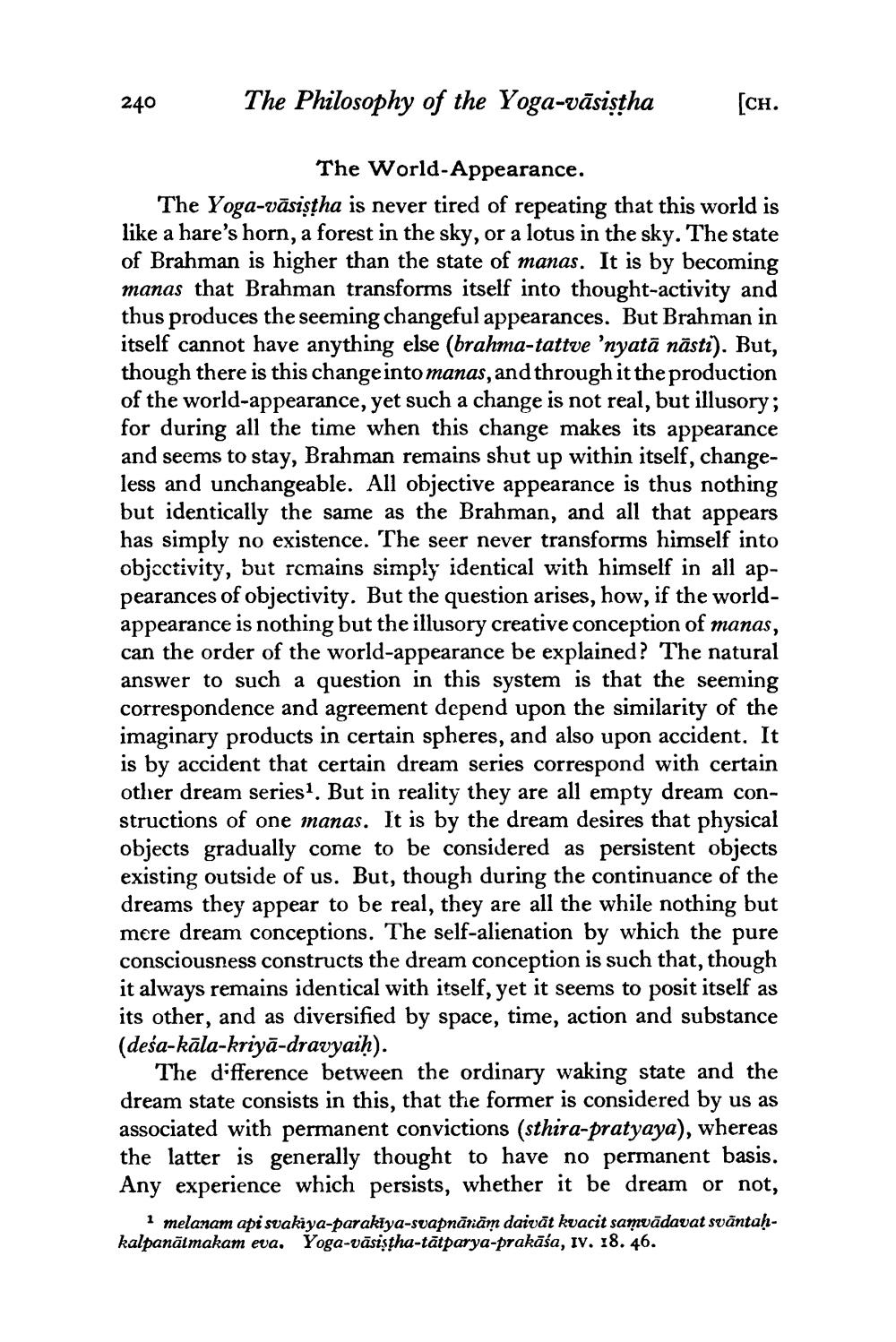________________
The Philosophy of the Yoga-vasiṣṭha
The World-Appearance.
The Yoga-vāsiṣṭha is never tired of repeating that this world is like a hare's horn, a forest in the sky, or a lotus in the sky. The state of Brahman is higher than the state of manas. It is by becoming manas that Brahman transforms itself into thought-activity and thus produces the seeming changeful appearances. But Brahman in itself cannot have anything else (brahma-tattve 'nyata nästi). But, though there is this change into manas, and through it the production of the world-appearance, yet such a change is not real, but illusory; for during all the time when this change makes its appearance and seems to stay, Brahman remains shut up within itself, changeless and unchangeable. All objective appearance is thus nothing but identically the same as the Brahman, and all that appears has simply no existence. The seer never transforms himself into objectivity, but remains simply identical with himself in all appearances of objectivity. But the question arises, how, if the worldappearance is nothing but the illusory creative conception of manas, can the order of the world-appearance be explained? The natural answer to such a question in this system is that the seeming correspondence and agreement depend upon the similarity of the imaginary products in certain spheres, and also upon accident. It is by accident that certain dream series correspond with certain other dream series1. But in reality they are all empty dream constructions of one manas. It is by the dream desires that physical objects gradually come to be considered as persistent objects existing outside of us. But, though during the continuance of the dreams they appear to be real, they are all the while nothing but mere dream conceptions. The self-alienation by which the pure consciousness constructs the dream conception is such that, though it always remains identical with itself, yet it seems to posit itself as its other, and as diversified by space, time, action and substance (deśa-kāla-kriya-dravyaiḥ).
The difference between the ordinary waking state and the dream state consists in this, that the former is considered by us as associated with permanent convictions (sthira-pratyaya), whereas the latter is generally thought to have no permanent basis. Any experience which persists, whether it be dream or not,
240
[CH.
1 melanam api svakiya-parakiya-svapnānām daivāt kvacit samvādavat svāntaḥkalpanatmakam eva. Yoga-vasistha-tātparya-prakāśa, IV. 18. 46.




